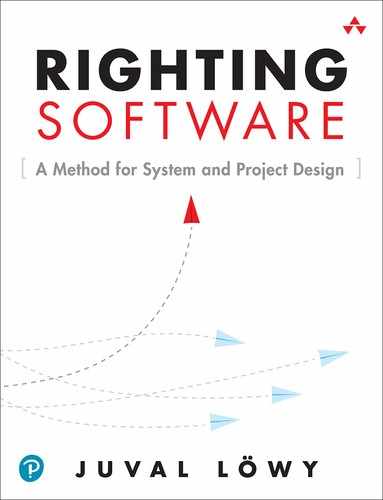Contents
Eliminating Analysis-Paralysis
Avoid Functional Decomposition
Problems with Functional Decomposition
Reflecting on Functional Decomposition
Example: Functional Trading System
Volatility-Based Decomposition
Decomposition, Maintenance, and Development
Volatility-Based Decomposition and Testing
Solutions Masquerading as Requirements
Example: Volatility-Based Trading System
Semi-Closed/Semi-Open Architecture
Chapter 5 System Design Example
Add Tradesman/Contractor Use Case
Project Design and Project Sanity
Chapter 7 Project Design Overview
Software Development Plan Review
Accelerating Software Projects
Total, Direct, and Indirect Costs
Criticality versus Activity Risk
Chapter 11 Project Design in Action
Unlimited Resources (Iteration 1)
Infrastructure First (Iteration 2)
Going Subcritical (Iteration 7)
Compression Using Better Resources
Rebuilding the Time–Cost Curve
Chapter 12 Advanced Techniques
Finding the Decompression Target
Designing a Network of Networks
Chapter 13 Project Design Example
Individual Activity Estimations
Dependencies and Project Network
Duration, Planned Progress, and Risk
Chapter 14 Concluding Thoughts
Architecture versus Estimations
Senior Developers as Junior Architects
Activity Life Cycle and Status
Projections and Corrective Actions
Appendix B Service Contract Design
From Service Design to Contract Design
